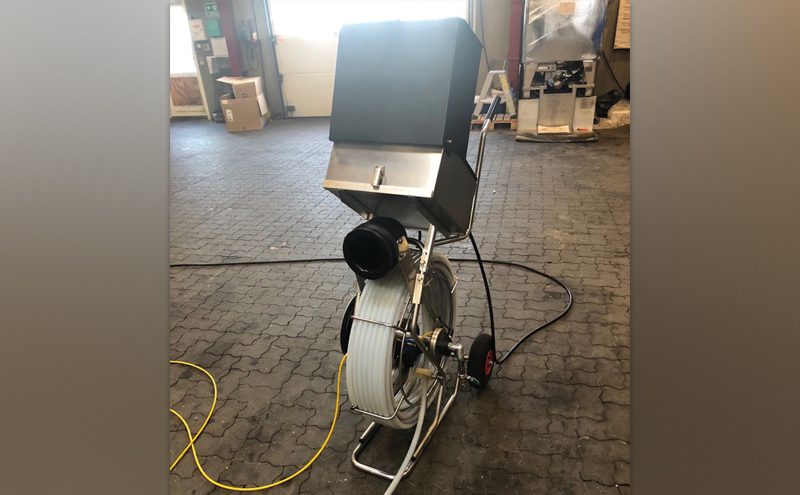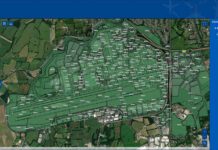
PBF Drainage Services has become a UK distributor for the Danish pipe lining system Bluelight which uses LED light to cure liners during installation.
The Bluelight system is believed to be the only patented system of its type currently on the market and has over 300,000 m of completed installations across Europe. They are manufactured by lining contractor Per Aarsleff Denmark.
The liners are used by PAD’s contracting arm so the firm has a wealth of knowledge which has enabled it to build a user-friendly system based on extensive testing and wide-ranging use in the field.
The liners can be installed and cured around multiple 90° bends within a pipe run. They can also negotiate diameter changes, and the system is claimed to have the fasted curing speed of any of the new LED-based lining systems. The use of LED lights, which emit light over a 360° viewing angle without any moving parts, means that the system is incredibly robust, says PBF. The ability to cure glass-fibre liners as well as felt liners increases its capabilities and includes the potential for ‘blind shot’ linings with only single entry points.

The Bluelight system utilises inversion equipment to install liners. The system can keep pressure in the liner where water infiltration occurs by means of an adaptor for the curing system, applied either directly into the liner or via the inversion equipment.
The LED light head is then pushed or pulled through the installed liner to the end point and the LED lights are then switched on via a touch screen control panel. The control system records and monitors all of the settings including pressure, light intensity, curing speed, and temperature, and it also controls the speed at which the light head is pulled back through the liner.
The liner is maintained at the required pressure using cooled air which is blown down the push rod system attached to the light train and through the middle of the light head which in turn also cools the LED lights. Once the light head is back within 1 m of the access point the automatic motor stops and the head is pulled back manually to prevent any damage occurring from over-pulling the light head.
The Bluelight system can use 100 mm to 250 mm (4 in to 10 in) diameter inversion liners and up to 600 mm (25 in) diameter glass-fibre liners. The standard and commonly required cable lengths are 40 m for the small 18 mm diameter light head, 50 m for the larger 22 mm diameter light head and 100 m again with the 22 mm diameter light head, although arrangements can be made to accommodate customer requirements. Curing can also be carried out from both ends of the pipe run to increase installation lengths.
The Bluelight system generally utilises pre-wet liners that have a shelf life of approximately three months if stored correctly or liners can also be wet-out on site if required, a process that requires no mixing of chemicals as Bluelight uses a single part resin. The liners have been specifically designed for use with the Bluelight system and have undergone full German DIBT certification which includes strength testing, abrasion testing and the ability to withstand high-pressure jetting. The liners have also undergone continuous testing to make sure that no delamination occurs between the felts and the outer layer.
The Bluelight system is primarily used where speed and minimal work area issues are present. This has included hospitals, schools, care homes, as well as road gullies and other outdoor areas.
For example, speed was the main priority when working at a university during holiday periods and the completion date had to be met without fail. On average 11 liners were installed during each shift, ranging in length of 5 m to 38 m in length. The client insisted on zero-odour production and this required either an epoxy resin or the use of the Bluelight styrene-free resin.
James Stern of PBF offered thoughts on his firm’s choice of Bluelight. The system is generally designed for lateral lining, so factors like resin choice become important. Styrene can be harmful, and produce odours during lining, while epoxy – generally the preferred resin – is both expensive and requiring of careful mixing. It also requires heating and time to achieve an ambient cure. “The Bluelight system reduces all of these issues by using a single part, styrene-free, odour-free resin, so there is no need for chemical mixing or wetting out of liners as our liners can be pre-wet and stored in cool boxes until required.”
The installation equipment and curing equipment used with Bluelight utilises only a very small footprint. Curing takes place using LED lights and is not reliant on any heat, the system is similar in size to a pushrod camera system. Curing speeds of up to 1.6 m per minute are achievable.







